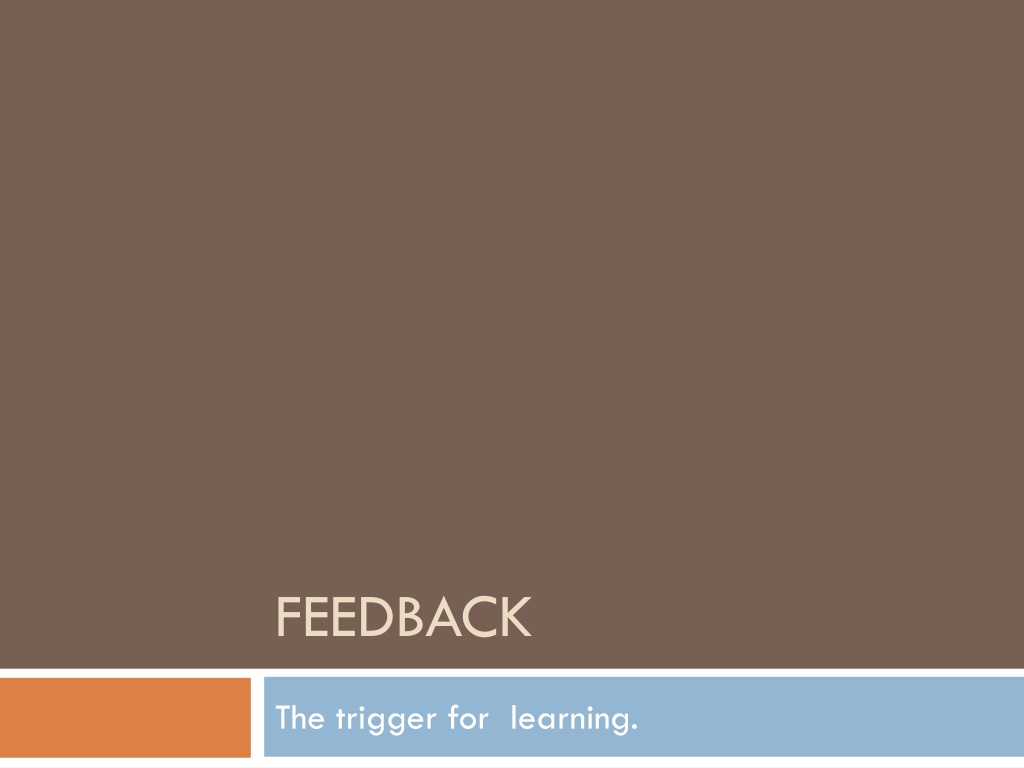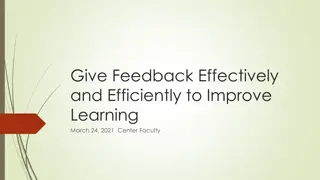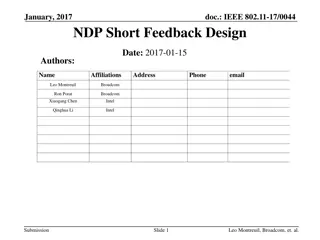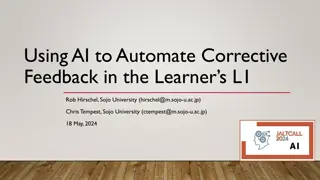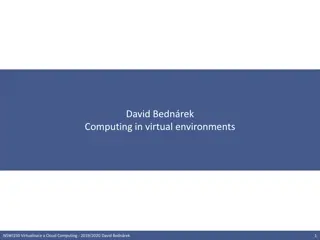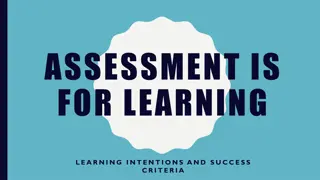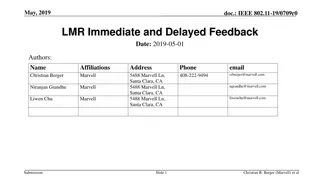Effective Feedback in Learning Environments
Constructive feedback is vital for educational progress, emphasizing both praise and areas for improvement. Explore various feedback models like Pendelton's rules, the SCOPME model, the Chicago model, and a 6-step problem-solving model. Learn how to provide feedback on unacceptable behavior with appropriate timing and communication strategies. Develop your own feedback model tailored to specific needs for effective learning outcomes.
Uploaded on Mar 01, 2025 | 0 Views
Download Presentation

Please find below an Image/Link to download the presentation.
The content on the website is provided AS IS for your information and personal use only. It may not be sold, licensed, or shared on other websites without obtaining consent from the author.If you encounter any issues during the download, it is possible that the publisher has removed the file from their server.
You are allowed to download the files provided on this website for personal or commercial use, subject to the condition that they are used lawfully. All files are the property of their respective owners.
The content on the website is provided AS IS for your information and personal use only. It may not be sold, licensed, or shared on other websites without obtaining consent from the author.
E N D
Presentation Transcript
FEEDBACK The trigger for learning.
Constructive feedback Needs elements of praise and highlights areas for further development. Can be a very important factor in educational morale. Effective feedback needs to be supportive and challenging.
Pendeltons rules The learner performs the activity. Questions are allowed only for clarification. The learner says what they thought was done well. The teacher says what they thought was done well. The learner says what could be improved on. The teacher makes suggestions on improvement.
The SCOPME model Listen to learner Reflect back Support Counsel Treat the information in confidence Inform without censuring Judge constructively Identify educational needs Construct and negotiate achievable learning plans.
The Chicago model Review the aims and objectives at the start Give interim feedback of a positive nature Ask the learner to give a self appraisal of their performance to you. Give feedback focusing on behaviour Give specific examples to illustrate your views Suggest specific strategies for the learners to improve their performance.
6 step problem solving model Problem is presented Problem is discussed Problem is agreed Solution is proposed Solution is discussed Solution is agreed.
Feedback about unacceptable behaviour The timing needs to be appropriate Use a phrase to set the scene Clearly state was not appropriate Give an example of this behaviour Pause for a response Respond to the suggestions made but define some definite change . Do not be drawn into justifications If there is lack of insight seek advise from a senior colleague.
